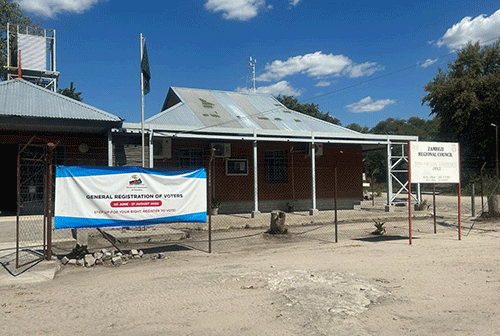KATIMA MULILO – Despite the access to and availability of quality healthcare for most Namibians having increased steadily since independence, facilities remain inaccessible to those in poor rural areas.
For instance, in the Zambezi region, many residents still commute long distances in search of healthcare facilities, as clinics and hospitals are out of their reach.
Judea Lyaboloma constituency is one of the eight constituencies of the Zambezi region. It is situated in the southern part of Katima Mulilo, and shares borders with Sibbinda in the North, Kongola in the North-West and Botswana in the south.
In an interview with New Era, Judea Lyaboloma councillor Humphry Divai confirmed that many residents in his area still find it difficult to access healthcare facilities, among other basic services.
“We have failed as a government after 34 years of independence to deliver services to the grassroots. People still walk 80km to and from to access health services. There are only two clinics that are serving over 8 000 residents in the area.
This other clinic at Sachona was constructed in 1972 before I was born. The government has failed to upgrade or even do some renovations to the facility. The building and nurses’ home are dilapidated,” Divai moaned.
Besides the only Sachona clinic in the area, there is one health centre atSangwali. Zambezi’s acting health director, Yolanda Lisho indicated that the provision of healthcare services in Zambezi has greatly improved. She said the government has delivered the most needed to elevate the healthcare system, such as the recruitment of healthcare workers, provision of pharmaceuticals and medical equipment, as well as upgrading the infrastructure.
However, she acknowledged there is a challenge when it comes to the procurement system.
She highlighted that the procurement process is very long and tedious, which delays the region acquiring medical supplies and equipment to effectively manage healthcare services.
The Zambezi region has several healthcare facilities, of which one is the Katima Mulilo State Hospital; 26 are primary healthcare clinics; three are health centres, and 51 are outreach points.
There are also three primary healthcare clinics which are under construction in Muzii, Malengalenga and Linyanti.
Lisho said these structures currently stand at 90% completion.
He al th facil i ties bu i lt since independence in the Zambezi include Impalila, Schuckmanburg, Ngoma, Lusese, Masokotwani, Kanono, Kaenda, Sibbinda, Choi, Sangwali, Chetto, Lisikili, Bukalo, Ngweze and Mavuluma. Divai argued that the introduction of the decentralisation policy in Namibia has not been well- implemented.
Another big challenge he mentioned in the constituency is that some community members are without national documents.
“S ome commu n ity membe r s hav e l i v ed wi thout nat i ona l documents up to the age of 50 years. The reason is that they are unable to access home affairs’ offices in Katima Mulilo, and lack money for transport to travel. Sometimes, one can arrive at the offices and find long queues.
You sit there without being assisted until late and return to the village,” he said.
According to him, the outreach programme does not yield much results because the officials have limited time, as they only visit an area for a day or two – leaving many people unattended.
He is of the view that there’s no doubt that if decentralisation is implemented efficiently, poverty will be reduced in the constituency and the region at large.
“Decentralisation policy, together with the poverty reduction strategy of the HPP [Harambee Prosperity Plan] and Vision 2030, can play an important role in reducing poverty and regional inequalities at the subnational level,” he suggested.
In terms of educational institutions, the constituency has five primary schools namely Mukorufu, Mbambazi, Lianshulu, Ngonga and Lubuta.
There are also four combined schools, namely Sangwali, Sauzuo, Lizauli, and Sachona.
Moreover, the area has Sangwali Senior Secondary School.
Other government facilities include two agriculture development centres, stationed at Sangwali and Sachona.
There is a veterinary service office and a sub-police station at Sangwali.
-anakale@nepc.com.na


